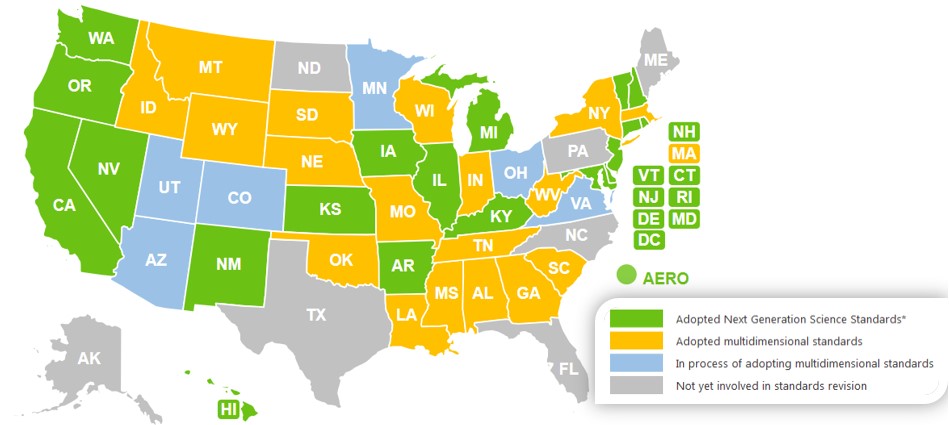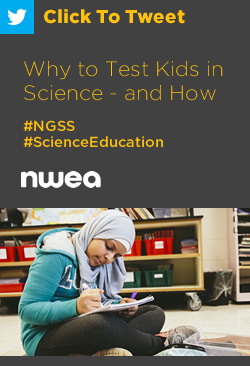 What do chefs, politicians, mechanics, educators, and doctors all have in common? The answer is science and engineering. Most of us probably didn’t realize when we started Kindergarten that science and engineering would affect us every day for the rest of our lives. Science and engineering are all around us – in current events, in the food we eat, even in governmental policies. Science—and therefore, science education—is central to student’s lives, preparing them to be informed citizens, successful problem solvers, and knowledgeable consumers. If kids are to be able to pursue expanding employment opportunities in science-related fields, they must have a solid K–12 science education.
What do chefs, politicians, mechanics, educators, and doctors all have in common? The answer is science and engineering. Most of us probably didn’t realize when we started Kindergarten that science and engineering would affect us every day for the rest of our lives. Science and engineering are all around us – in current events, in the food we eat, even in governmental policies. Science—and therefore, science education—is central to student’s lives, preparing them to be informed citizens, successful problem solvers, and knowledgeable consumers. If kids are to be able to pursue expanding employment opportunities in science-related fields, they must have a solid K–12 science education.
Thanks to new, multidimensional standards like the Next Generation Science Standards (NGSS), K-12 students have access to a high-quality science education that provides them with the skills and knowledge they need to be well-informed citizens, to be prepared for college and careers, and to thrive in modern society. Major advances have taken place in the world of science, engineering, and in our understanding of how students learn science effectively.
The foundation for the new multidimensional science standards is A Framework for K-12 Science Education (2012 NRC) that describes a vision of what it means to be well-educated in science and engineering. So far, 37 states have developed new multidimensional standards, including the 19 states, the District of Columbia, and the American Education Reaches Out (AERO) schools that have adopted the NGSS. In addition, there are 6 other states in the process of developing new science and engineering standards as shown this this May 2018 map.

The dimensions of all these new science standards are:
- Science and Engineering Practices (SEPs) – the behaviors that scientists and engineers engage in as they study and build theories or systems
- Crosscutting Concepts (CCCs) – which clarify connections across science disciplines and help students create a coherent view of the world based on science
- Disciplinary Core Ideas (DCIs) – the fundamental ideas students must know to understand a given science discipline
These multiple dimensions represent an effort to make all kids scientifically literate (not just future scientists), so all kids can participate in a dialogue about current events and issues. The real innovation in multidimensional standards is the requirement that all students operate at the intersection of practice, connection, and content.
As Roy Beven, M.Ed., senior science content specialist at NWEA and recipient of the Presidential Award for Excellence in Science and Mathematics Teaching, says, “This elevates the process of engineering design up there with the process of scientific inquiry. This means kids learn to problem solve and use science to answer questions. It helps them make sense of the phenomena they see around them while they get the opportunity to practice problem solving and apply it to their everyday lives.”
 NWEA has developed MAP Science assessments that have been aligned to new multidimensional standards, including the NGSS*. These assessments are designed to be a growth measure as students’ build their understanding of the multidimensional performance expectations. NWEA is the only assessment provider that provides this type of assessment, and has invested an immense amount of time into understanding these multidimensional standards and aligning test items to them.
NWEA has developed MAP Science assessments that have been aligned to new multidimensional standards, including the NGSS*. These assessments are designed to be a growth measure as students’ build their understanding of the multidimensional performance expectations. NWEA is the only assessment provider that provides this type of assessment, and has invested an immense amount of time into understanding these multidimensional standards and aligning test items to them.
By adapting to each student’s learning level, the MAP Science assessment offers a personalized
assessment experience that helps answer the question, “Are my students really learning science and engineering?” Within 24 hours, educators have essential information about what every student knows and is ready to learn. They can use MAP Growth data to:
- Identify and reinforce evidence-informed instructional practices
- Differentiate instruction using valid, reliable, and actionable data
- Evaluate science-related programs and identify professional development needs
- Use exclusive norms and growth information to compare student achievement and growth over time
- Prepare students for end-of-year state-mandated assessments
Beven notes, “This is a very exciting time in science education. Students are starting to experience three-dimensional teaching and learning as teachers implement the new, engaging, multidimensional science and engineering standards.”
To learn more about MAP Science for use with Next Generation Science Standards (2013)*, check out this FAQ on our community.
—
* Next Generation Science Standards is a registered trademark of Achieve. Neither Achieve nor the lead states and partners that developed the Next Generation Science Standards were involved in the production of this product, and do not endorse it.